With the pandemic affecting in-person contact, there has been a steady rise in collaboration software. Uma Iyer finds out how these cutting age softwares are revolutionizing our lives.
For generations, we have all needed personal connection. The in-person connection has been paramount to human well-being. People do keep pets and are close to them when the human connection is missing. These connections then lead to meaningful collaboration, which is the foundation of all progressive cooperative human endeavors.
With the pandemic, however, life has changed all around the world. Like Xerox became synonymous with photocopies, Zoom has become the same for digital conversations. Millions of people resorted to WhatsApp videos, Google Hangouts and FaceTime as a staple in their daily family conversations.
Organizations automatically moved on to Zoom meetings full time or Microsoft Teams or Skype. The evolution from a fixed wall phone to a mobile device to a completely mobile chat device has been nothing but a marvel.
The Evolution
Platforms have been built and have grown leaps and bounds in creating connection tools in the past few years.
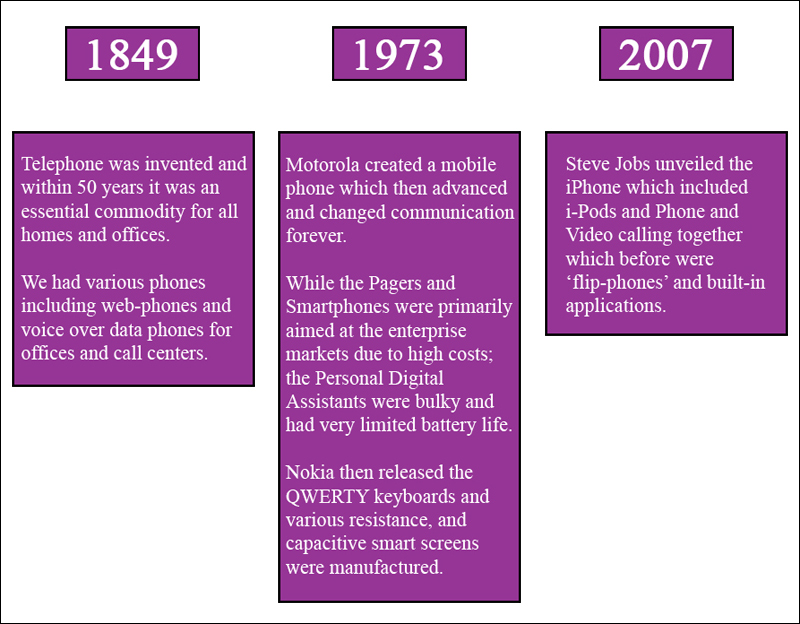
Now both Android and iOS have over two million applications available in the app store and many of these applications support video conferencing.
The leaders in collaboration tools and their market share
10 of the top collaboration software vendors accounted for nearly 65% of the applications growing nearly 30% and over £17 billion in licenses and subscription. Microsoft was a leader with nearly a 25% jump in accounting for over 25% of the market share with Zoom closely following in the No.2 position, followed by Google and Cisco.
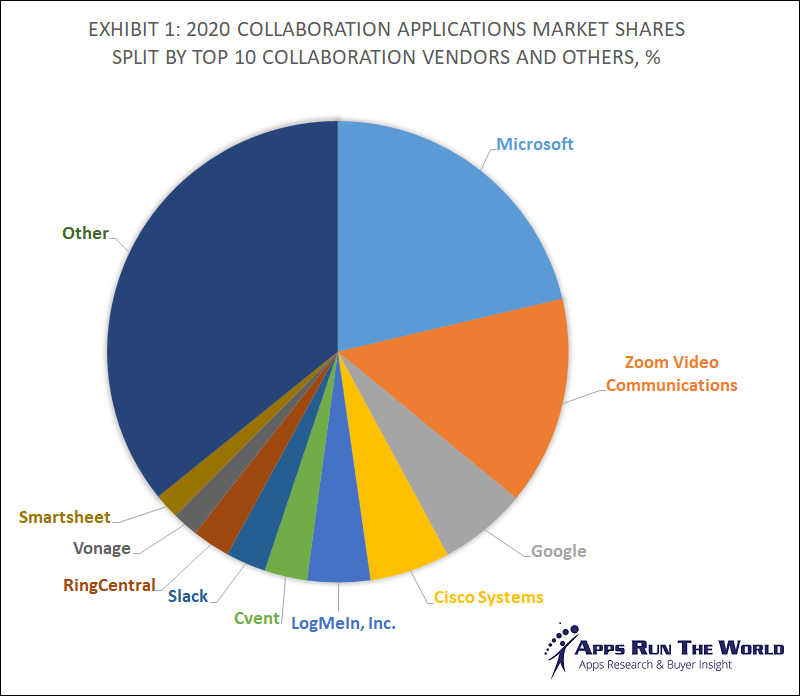
Microsoft Team vs Zoom
Microsoft leveraged the Teams to create a collaboration platform by using the built-in learning management system, meeting organization, task management, etc. ‘Microsoft reported Teams is being used at thousands of companies (3,000+ as of 1QFY22) with more than 10,000 users each for team collaboration. Overall, Teams sees 250 million monthly active users as of 4QFY21.
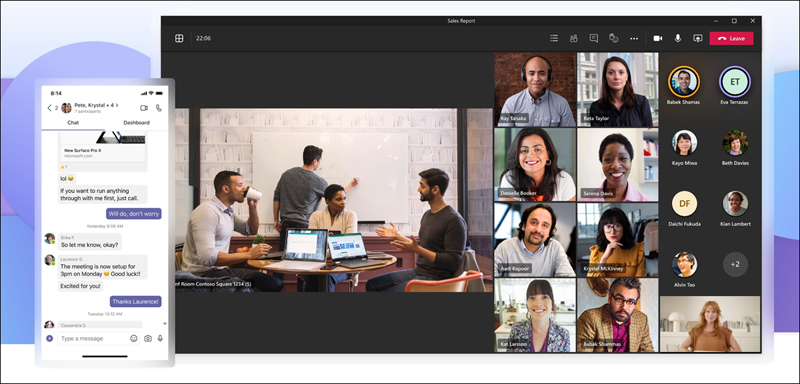
40-minute workout culture
Zoom, however, remains the favorite among the corporation of video conferencing applications as it is extremely easy to use and available for free for 40 minutes for general users. From learning Yoga to attending Zumba classes, Zoom created a 40-minute workout culture across the globe. The transcription service really helps in understanding different accents as well.
The lesser-known entrants
There is a lot of space in the market especially for smaller enterprises that require a secure and a small-scale solution. One of the other aspects is also the confidentiality requiring secure cloud-based solutions. The Ministry of Defense (MoD), Information Systems and Services (ISS) introduced Defense Share. Powered by INOVEM’s Kahootz product, it is now the MOD primary collaboration tool. The tool allows them to safely share information up to ‘OFFICIAL-SENSITIVE’ classification with the Defense industry, other government departments, and allied nations.
Other Collaboration software providers included in the report are: 3cx, 8×8, Adobe, Amazon Web Services (AWS), Arkadin, Asana, Atlassian, Aurea, Autodesk, Axway, Box Inc., Brainshark, CenturyLink Cloud, Citrix, Cybozu, Dalet, Esker SA, Eventbrite, Fuze, Granicus, GreenOrbit, Huddle, IBM, Intrado, Intralinks, Mitel, NCR Corporation, Neudesic, ON24, Open Text, Oracle, Premiere Global Services, Qualtrics, Questback, SAP, ServiceNow, Skytap, Smartsheet, Zoho Corp. and many others.
The future, is it a saturated market?
There are many unsolved problems in the collaboration space. One of the more important one is Agent interaction. The Chat-bots and Machine Learning are adding to the collaboration space immensely. Amazon collects over 7000 meta data items about a user per conversation. The collaboration tools will continue to leverage the knowledge about the customers.
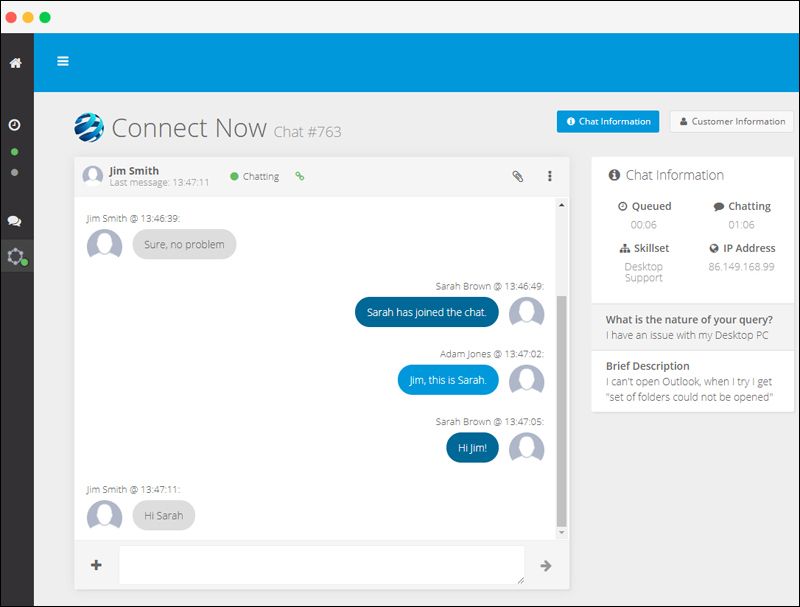
Agents must work through canned responses within chats and get to live performance indicators. It would immensely help if there were features specifically designed to help the Customer Support agent’s performance as well. Hologram technology is also coming up for Airport support and departure or arrival guidance’s where repetitive information is required. There are various features that can be implemented including knowledge search, comprehensive data, and knowledge search to help with problem management and reduce the dependency on people and increase productivity.
“What we are seeing from the customers from the service industry is that telephony is a thing of the past. The return of investment will be immense in live chat environment as the industry would have spent over a billion dollars by 2030. Roughly £5 billion worth of investment has gone back into decentralization of data to avoid large scale hacking as well for many key institutions where data confidentiality and sensitivity is paramount. People are not running back to offices anytime soon so the collaboration tools are here to stay! ”
-Sukhdev Chandi (Start-up Pioneer ConnectNow)
Human connections require various dimensions to meaningfully engage with each other. With various languages and transcription services it has become imperative that we have to keep enhancing the tooling if not connect the various tooling to generate a networked collaboration mechanism. This is a field that will keep growing with new entrants constantly challenging the product lifecycle of its predecessors and one needs to keep an ear in the ground or eyes peeled on your screen!
In case you missed:
- None Found







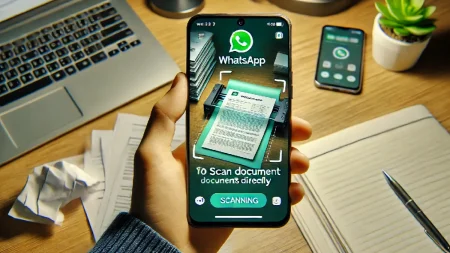


1 Comment
Thank you for sharing the information about the future of human collaboration, it is good article. keep sharing.